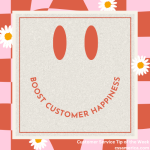
As we continue the slow trend of more and more customer interactions becoming in-person again, we need to remember those signs that we’re about to enter one of THOSE conversations. It can typically take only 5-10 seconds to realize this is going to be a high-risk situation with the customer – where they’re coming in irate, upset, or complaining.
In that short moment-of-truth, your response can trigger their emotion, even if they’re not yet there. So it’s important to be aware of potential signs of trouble:
- They have been waiting a long time.
- They’re looking at their watch.
- They mention a previous conversation about an issue or unresolved need.
- They’re LOUD!
- They say “I expect…”
- They state that they’ve been directed to several other employees or departments before you.
- They use (and often emphasize) words like: problem, issue, mad, upset, angry.
It’s at times like these – situations like described above – that our service recovery senses and skills need to kick in. We need to make sure we’re not making the situation worse with our original response and that we’re immediately focused on listening, empathy, and self-awareness of our body language at that moment-of-truth.
Identify the signs of a need for service recovery.
Signup for FREE Tips! Contact Us More Resources for You Visit Our Home Page























